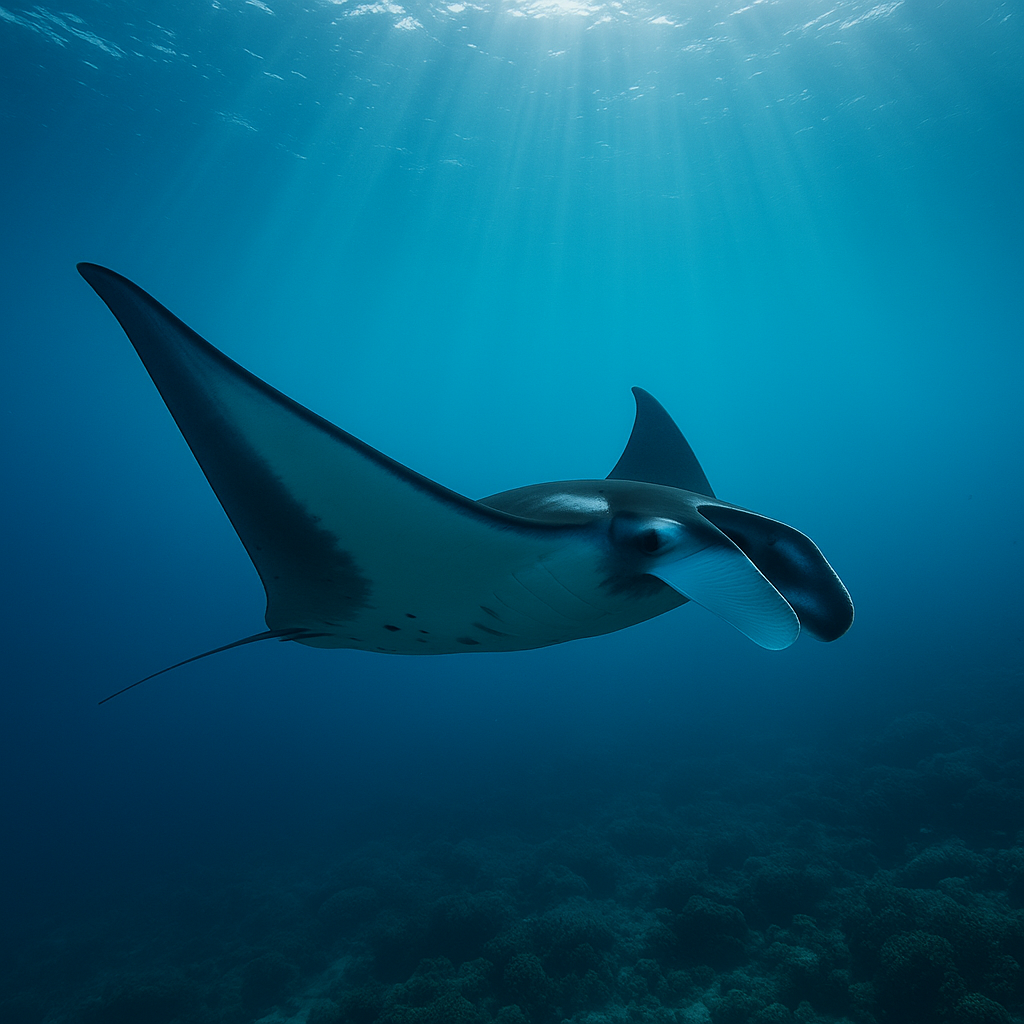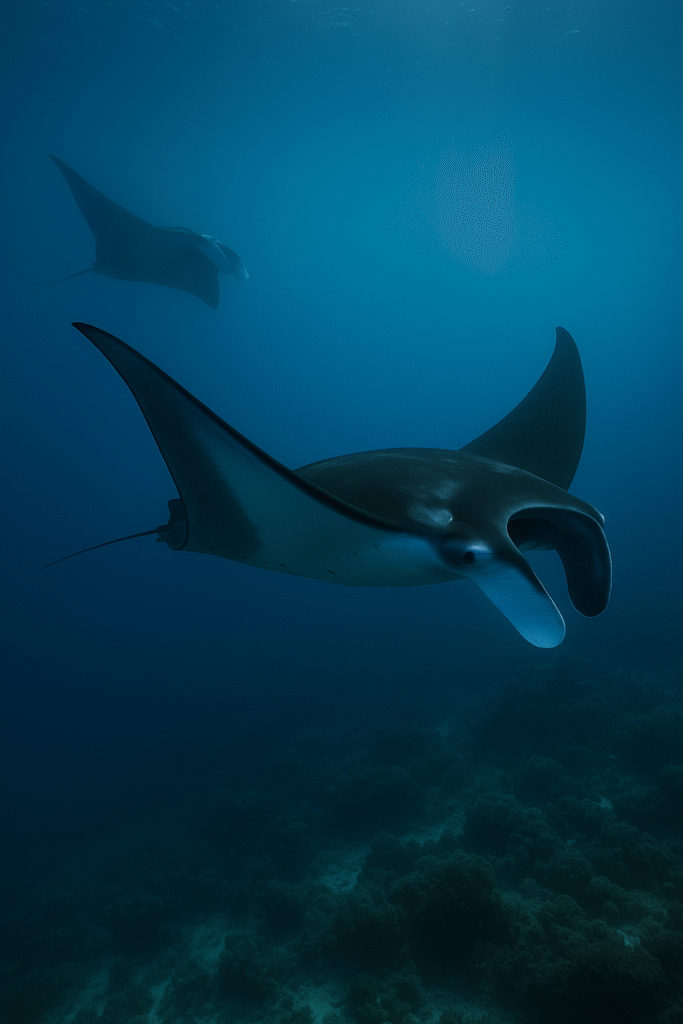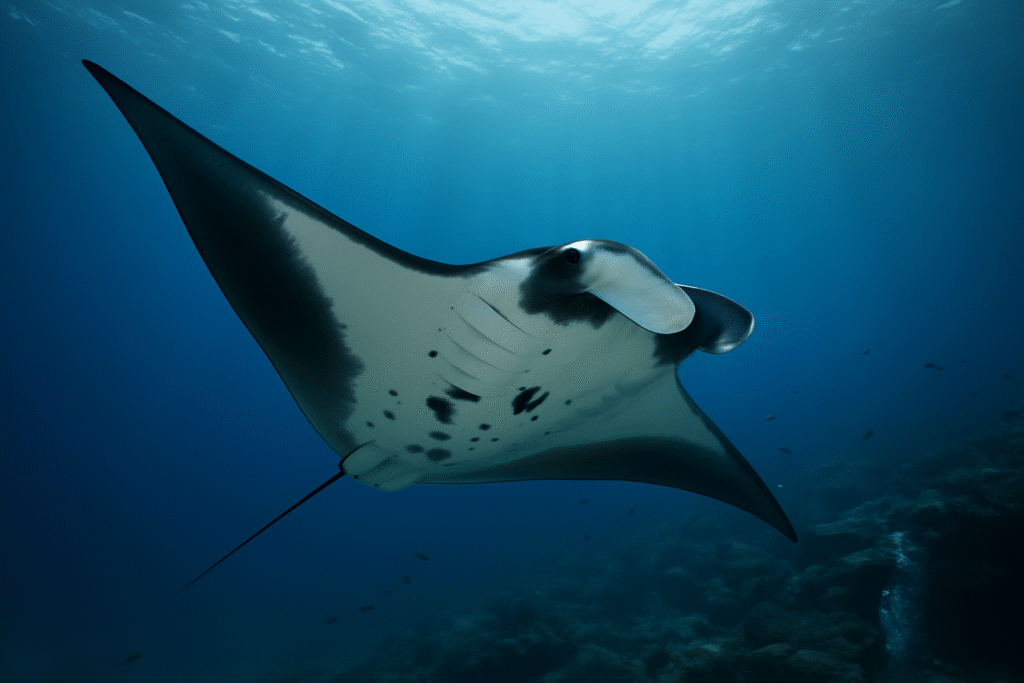Beneath the surface of the world’s warm oceans, where sunlight fractures into shimmering beams and silence stretches unbroken, glides a shadow so vast it seems to belong to another world. The giant manta ray, with wingspans reaching up to seven meters, moves not as a fish, but as a spirit—weightless, effortless, eternal.

To witness one is to feel both awe and unease. Its triangular body unfurls like a sail, each beat of its massive fins stirring the water with a rhythm older than time. And yet, despite its enormity, it makes no sound. The manta drifts—an ocean phantom, passing over coral kingdoms and abyssal plains with the dignity of a sovereign in exile.
A Living Paradox
Mantas are creatures of paradox. They are immense, yet harmless; filter-feeders who consume only plankton, yet move with the grandeur of leviathans. They bear the wings of angels, yet their cephalic fins—rolled into horns when not in use—have inspired the name devilfish. This duality has shaped centuries of human imagination.
For Pacific islanders, the manta was a guardian spirit, guiding fishermen through perilous waters. In ancient Peru, it was etched into Nazca desert lines, its form stretched across the earth as though anchoring the ocean’s presence on land. To sailors, encountering its shadow beneath their vessels was an omen, a reminder of the unfathomable lives that stir beneath the waves.
The Grace of Intelligence
Unlike many of their cartilaginous kin, mantas possess remarkable intelligence. With the largest brain-to-body ratio of any fish, they demonstrate curiosity, memory, and even self-awareness—passing mirror tests once thought to define only primates and dolphins. Divers report moments of connection: a manta circling slowly, locking eyes, and hovering in stillness as though asking, Do you see me as I see you?
These moments blur the line between observer and observed. In their calm regard, humans glimpse an alien consciousness—not predatory, not indifferent, but reflective.
Shadows Under Threat
And yet, for all their majesty, manta rays are fragile. Overfishing, driven by demand for their gill plates in traditional medicine, has pushed populations into decline. Nets, boats, and climate change now shadow their migrations. What was once an endless ballet across oceans is narrowing into survival.

Marine sanctuaries and conservation programs fight to protect them, yet the manta remains a symbol of what is at stake beneath the surface—a reminder that the ocean’s giants can vanish silently, long before we realize what has been lost.
The Eternal Drift
To see a manta ray rise from the blue is to feel time collapse. They are not creatures of this era alone; they are echoes of deep history, gliding forms that have haunted seas for millions of years. They remind us that the ocean is not merely water, but memory—vast, weightless, and filled with shadows that outlast us all.

In the end, the manta ray is not simply a marvel of marine life. It is a question, moving silently across the reefs: What do we choose to preserve? What stories of the ocean will remain when our own time has passed?
As it glides back into the abyss, its dark wings folding into the distance, we are left with silence. The ocean keeps its secrets, and the manta remains—part guardian, part ghost, part myth.


Reply